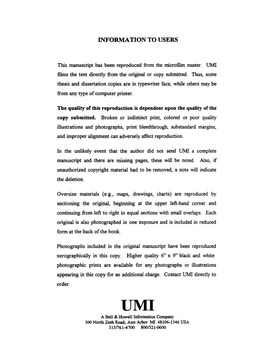| dc.contributor.advisor | Nicholas, K. M., | en_US |
| dc.contributor.author | Singh, Sumita. | en_US |
| dc.date.accessioned | 2013-08-16T12:30:06Z | |
| dc.date.available | 2013-08-16T12:30:06Z | |
| dc.date.issued | 1998 | en_US |
| dc.identifier.uri | https://hdl.handle.net/11244/5667 | |
| dc.description.abstract | A general route for the synthesis of N-alkoxy-N-alkylamidine hydrochlorides by reaction of organic nitriles with (N-alkyl-N-alkoxyammine)dimethylaluminum chloride (chapter 4, 26) is described. | en_US |
| dc.description.abstract | In order to obtain primary and secondary allyllic amines via Fe(II, III)-chloride catalyzed reactions, alternative aminating agents were sought. 2,4-dinitrophenylhydroxylamine (chapter 3, 6) reacted with olefins to produce the 2,4-DNP-allylamines (chapter 3, 10) in good yields and high selectivities. Attempts to deprotect the secondary 2,4-DNP-allylamines (chapter 3, 10) were not successful. Methylation and benzylation of these allylamines yielded the corresponding products (chapter 3, 14a, b, c and d) in high yields. Cleavage of the 2,4-DNP ring from the tertiary N-methyl-N-(2,4-DNP)-allylamine (chapter 3, 14b and c) with excess aqueous methylamine yielded the corresponding secondary N-methyl-allylamines (chapter 3, 15b and c) in moderate yields. | en_US |
| dc.description.abstract | Part I. The earlier work done in our lab on allylic amination of olefins catalyzed by Fe(II, III)-chlorides demonstrated that the formation of free PhNO is not involved and the structure of the active catalyst was determined (chapter 1, 27). Attempts were made to develop a catalyst-based enantioselective version of the reaction. The Fe(II)-salen complexes (chapter 2, 9) showed modest catalytic activity in the reactions of olefins with PbNHOH and involved the formation of free PhNO as the active aminating agent. The diamine oxide (chapter 2, 24) and the diphosphine oxide (chapter 2, 26) ligands displaced the azobenzenedioxide ligands from the active complex (chapter 1, 27). However, the new metal species (chapter 2, 37) formed did not undergo any further reaction. | en_US |
| dc.description.abstract | Part II. A general route for the solution phase synthesis of unsymmetrical tertiary phosphines, which can be adapted for their solid phase synthesis, was developed. This route involves selective, sequential nucleophilic substitutions on trivalent phosphorus using easily accessible reagents under mild conditions. The starting materials for this methodology, N-methyl-N-phenylaminochloroalkylphosphines (chapter 6, 12, 13), were prepared in high yields. The unsymmetrical tertiary phosphines (chapter 6, 18) were obtained by highly selective displacement of the chloride from the aminochlorophosphines by Grignard reagents to yield eminophosphines (chapter 6, 17), followed by displacement of the N-methyl-anilide by organolithium reagents. | en_US |
| dc.format.extent | xxiv, 238 leaves : | en_US |
| dc.subject | Catalysis. | en_US |
| dc.subject | Phosphine. | en_US |
| dc.subject | Amination. | en_US |
| dc.subject | Alkenes. | en_US |
| dc.subject | Chemistry, Organic. | en_US |
| dc.title | A study of the scope of metal-catalyzed allylic amination of olefins and an approach towards solid phase synthesis of unsymmetrical tertiary phosphines. | en_US |
| dc.type | Thesis | en_US |
| dc.thesis.degree | Ph.D. | en_US |
| dc.thesis.degreeDiscipline | Department of Chemistry and Biochemistry | en_US |
| dc.note | Adviser: K. M. Nicholas. | en_US |
| dc.note | Source: Dissertation Abstracts International, Volume: 59-07, Section: B, page: 3449. | en_US |
| ou.identifier | (UMI)AAI9839801 | en_US |
| ou.group | College of Arts and Sciences::Department of Chemistry and Biochemistry | |
